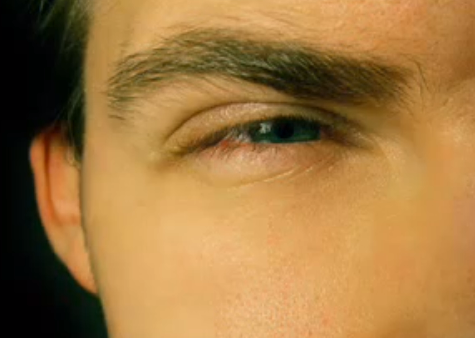Vision is very important since it is one of the primary senses that people use to interact with the environment. Having blurred vision in one eye can be very disconcerting, not to mention that it may seriously affect your daily life. Blurred vision can be caused by small issues such as discharge and crying. It may also be caused by conditions that can be treated or corrected, using lenses. However, this may also be an indication of a bigger problem, such as brain damage, which affects one of the optic nerves. Commonly, blurred vision in one eye can be caused by defects in refraction of light by the lens, which can be corrected with prescription lenses.

What causes blurred vision in one eye?
Blurred vision in one eye can be caused by several factors and these can be categorized as follows:
Common causes
These are factors that are treatable and can be corrected:
- Cataracts – This is the clouding of the conjunctiva of the eye, and can be removed surgically.
- Migraine headaches
- Dry eyes
- Age-related macular degeneration – This affects the part of the retina that affects detailed vision
- Inflammation of the eye
- Lens problems – which lead to farsightedness or shortsightedness and can be corrected using lenses.
- Diabetic cataracts, retinopathy and blindness
- Presbyopia – farsightedness brought about by age
- Epiretinal membrane – This is a layer that forms over the retina thereby affecting vision. It blocks any light from reaching the retina and hence the blurred vision.
- Pterygium – This is a small growth that occurs on the eye’s surface and this can sometimes change the shape of the cornea, thereby causing the blurry vision
- Vitreous hemorrhage – the vitreous gel in the eye is very clear, so when blood leaks into it, it affects the passage of light thereby causing the blurry vision.
- Retinal vein occlusion – When this vein is blocked, it cannot provide food and nutrients to the retina, thereby affecting its performance
- Keratoconus – This is a condition that makes the cornea to adopt a conical shape. The cornea is the one that does most of the focusing thereby affecting vision.
Serious causes
These are factors that are life-threatening or can lead to permanent damage and blindness:
- Eye trauma
- Brain tumor
- Glaucoma – brought about by an increase in pressure in the eye
- Retinal detachment – The retina becomes detached from blood vessels that keep it supplied with nutrients and oxygen
- Optic neuritis – inflammation of the optic nerve
- Transient ischemic attack – these are symptoms that resemble those of stroke and usually points to an impending attack of stroke.
- Stroke.
What is the diagnosis of blurred vision in one eye?
In order for the doctor to know whether this is a serious indicator of an underlying condition, or a treatable issue, he or she will ask you a number of questions.
- Have you had any trauma to the eye?
- Do you have any medical conditions, such as diabetes?
- Does the blurry vision come and go, or does it persist?
- How long has the blurry vision been apparent?
- Are you on any medication that may cause this issue?
The doctor will also examine your eye, and may also ask for an MRI of the eye. Blurriness in one eye, in most cases, is caused by light conditions. However, at other times it may be an indication of a greater issue, which may lead to permanent loss of eyesight, or life. It is important that you are candid with the doctor so he can properly diagnose the problem. Some of the life-threatening conditions that may be indicated by loss of vision in one eye include:
- Brain Damage
- Encroaching blindness
- Serious infection of the structures around the eye or the optic nerve
- Impending coma
- Spread of cancer
What are the symptoms of blurred vision in one eye?
Blurred vision in one eye creates images that are somewhat clear, and not clear, at the same time. This can be very disconcerting and can affect how you live your life. Other symptoms that accompany blind vision in one eye are:
- Excess production of tears and discharge
- Poor nighttime vision
- Bloodshot eyes
- Whenever you look at a light source, you will notice a halo around it
- Dry eyes
- Increased sensitivity to light
- Headaches
There are symptoms that usually indicate a very serious underlying problem and these are:
- Passing out or unresponsiveness; changes in alertness or consciousness
- Changes in the moods and mental status – this may manifest as hallucinations, delusions, confusion and delirium
- Painful eyes, and sudden change in vision
- Numbness or weakness on one side of the body – may indicate oncoming stroke
What is the treatment of blurred vision in one eye?
Treatment for blurred vision in one eye can be treated if it is caused by refractive errors, Astigmatism, farsightedness and shortsightedness can be corrected permanently through laser surgery, or they can be corrected temporarily through the use of lenses. If the blurred vision is caused by other underlying conditions, then these must be treated urgently, especially in cases of impending stroke and diabetes. If you should suddenly develop blurred vision in one eye, and it persists for a day or two without clearing up, then you should see a doctor as soon as possible.


